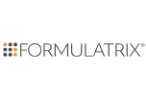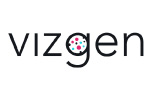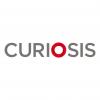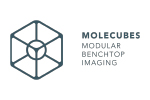Agilent provides xCELLigence impedance-based, label-free, real time cell analysis system and NovoCyte flow cytometers.
Automated microscopy and Spatial Proteomics
Automated microscopy and image analysis
Discover
Related topics
Don't waste your time for homogenization and get best results in neurscience with Singulator!

Jan 6, 2025
Single-nuclei sequencing (SNS) is a transformative approach for dissecting cellular diversity in complex tissues like...
Get your cells ready for NGS with tiples nanodispenser MANTIS

Jan 6, 2025
Generating high-quality cDNA libraries for efficient sequencing of T-cell receptor mRNA from single cells.
Webinar recording: Deep dive into Spatial Biology with MERSCOPE Ultra Platform

Aug 16, 2024
We invite you to learn more about MERSCOPE Ultra Platform. Webinar featuring Rob Mathis (Global Instrument Product...
Single-Cell Genomics applications ? Ideal work for the WOLF gentle cell sorter

Aug 2, 2024
The field of genomics and computational biology has progressed immensely over the last decade and new single-cell...
Celloger Pro live-cell analyzer: miniaturized and powerful tool for Spheroids and Organoids research

Jul 31, 2024
EV's and Nanoparticles in "Full Spectrum View" with the new Cytek ESP module

Jul 19, 2024
Cytek’s Enhanced Small Particle (ESP) Detection Option expands the capability of your Cytek Aurora or Cytek Northern...
Study finds that automated liquid-handling operations are more robust, resilient, and efficient!

Jul 18, 2024
Liquid handling devices (LHD) improve lab efficiency and accuracy. They automate liquid transfers, increase experiment...
Scaling Whole-Genome Sequencing to >50,000 single cells using cellenONE

Jul 16, 2024
cellenONE technology enabled the creation of tens of thousands of high-quality single-cell genomes, paving the way for...
Automatic, Real Time Acquisition of Bioluminescent Kinetic Curves

Jun 27, 2024
Watch this pre-recorded webinar with Dr. Andrew Van Praagh to learn how our new Aura software feature —Kinetics—...
Theranostics: From Mice to Men and Back

Jun 25, 2024
Recorded webinar
Presenters: Prof. Dr. Ken Herrmann and Prof. Dr. Katharina Lückerath – Moderator: Hannah Notebaert

Jul 20, 2016
Virus infection of a host cell typically includes the selective suppression of host cell functions and redirection of resources towards viral replication and assembly, ultimately leading to host cell lysis and dissemination of new virus. While host cell rounding, detachment from the plate surface and/or lysis are readily detected by real-time impedance monitoring, more subtle changes in host cell morphology occurring during earlier phases of viral infection can also be monitored. This sensitivity to virus-induced changes in host cell morphology and behavior makes the xCELLigence technology very well suited for a wide array of virology applications, including: differentiating between virus strains/isolates based on the kinetics of replication and cytopathic effect, determining viral titers, determining neutralizing antibody titers, and studying virus-host cell interactions using physiologically relevant cell types that cannot typically be used because they aren’t compatible with traditional assay techniques.
Evaluating the relative fitness of different virus strains/isolates, and determining the identity of a virus isolate can involve a large number of techniques, including: ELISA, PCR, RT-PCR, Western blotting, plaque assays, immunofluorescence, etc. Owing to its ability to kinetically characterize a virus-induced cytopathic effect, xCELLigence real-time cell analysis (RTCA) can be used in place of, or in addition to, some of these traditional assays for characterizing virus fitness and/or identity.
RTCA-based kinetic comparison can be used for assessing the relative fitness/virulence of different virus isolates/strains, or to help identify a virus using RTCA traces from known standards.
Key Benefits:
- Quantify virus titer: An automated, simple, reduced workload alternative to plaque assays.
- Evaluate the fitness of different strains/isolates: The relative fitness of different viruses (natural isolates, engineered mutants, etc.) are readily evaluated using the onset and kinetics of virus-mediated cytopathic effects.
- Determine/confirm virus identity: Real-time kinetic traces of virus-mediated cytopathic effects can be compared to those of characterized viruses to help determine/confirm the identity of a virus.
- Quantify neutralizing antibody titer: Because the time of cytopathic effect onset correlates with neutralizing antibody concentration, standard curves are easy to generate. These can be used for quantifying neutralizing antibody in samples of unknown concentration.
- Rapid assay optimization: Quickly identify the optimal viral titer and assay time point for subsequent screening of inhibitory compounds, neutralizing antibodies and neutralizing serums.
Brand profile
Agilent provides xCELLigence impedance-based, label-free, real time cell analysis system and NovoCyte flow cytometers.
More info at:
www.aceabio.com